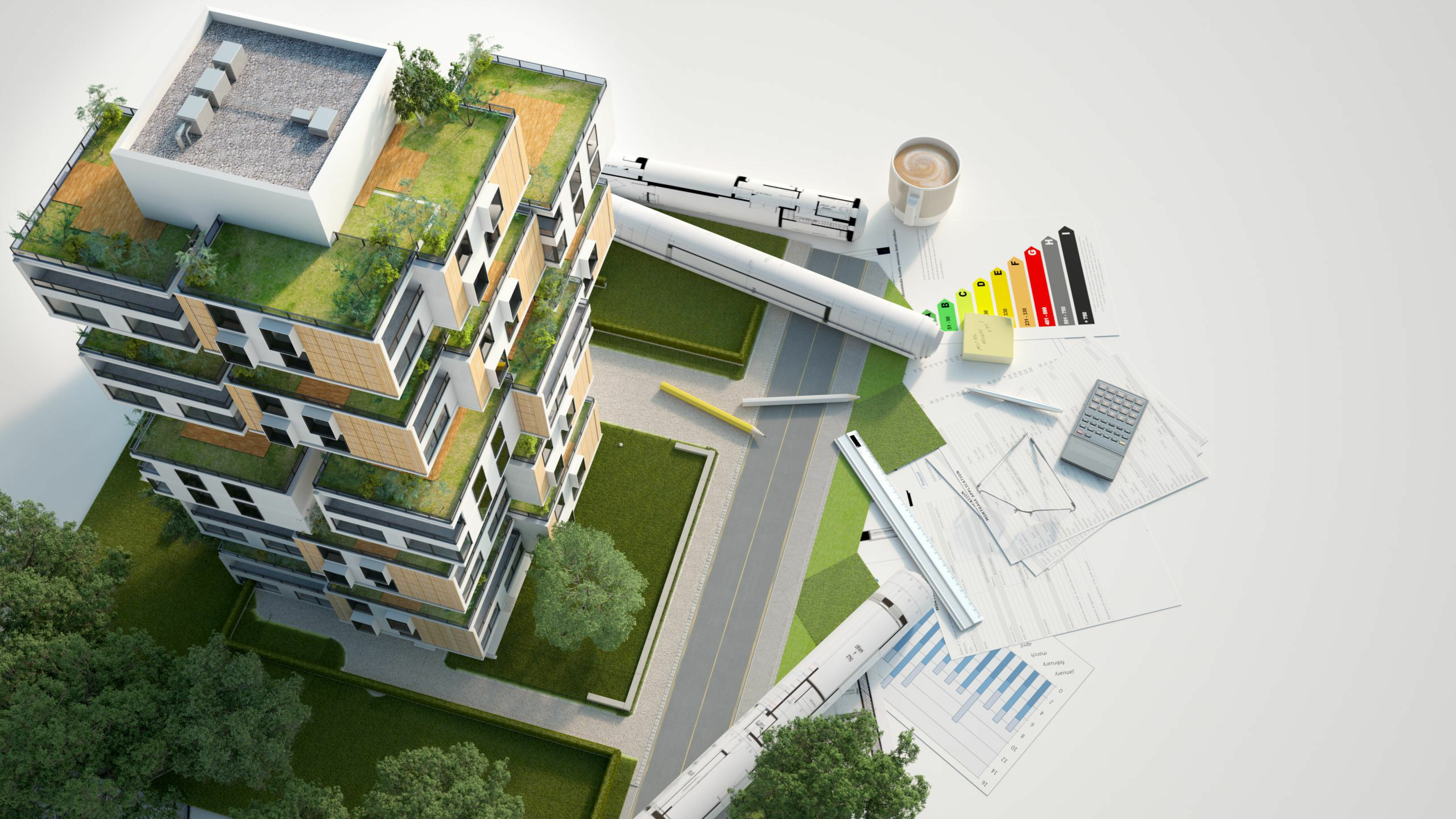31 Aug 2022
Changing Legislation in Commercial Real Estate

The commercial real estate sector is facing increasing demands, with buildings acknowledged as one of the largest producers of carbon globally.
In 2019, the UK Government consulted on how to improve the energy performance of commercial buildings. The sector suggested a long-term plan requiring commercial buildings to meet an EPC B by 2030. An Energy White Paper was published in December 2020, setting out a Net Zero future.
Following further consultation in 2022, the sector is awaiting a response from the Government.
These compliance changes are estimated to impact one million properties accounting for 85% of rented commercial buildings.
Achieving these standards will require a considerable investment in insulation and mechanical and electrical services in a sector which knows little about how assets perform.
As part of the roadmap towards Net Zero by 2050, the Government proposed an interim milestone of EPC C by 2027. However, the property sector has not received this well.

The performance gap
The EPC system measures a building’s potential efficiency, not energy consumption. There is typically a significant difference between assessed and actual, often referred to as the performance gap.
Building performance depends on how energy is managed, maintained and used.
Landlords are aware of total energy consumption via their annual utility bill; however, monthly bills provide little detail.
With changing space utilisation following the pandemic and increases in wholesale energy costs, building operators need to understand their buildings more.
National Performance based policy
The Government has set out plans to introduce a framework for assessing energy use in commercial buildings above 1,000m² with published ratings.
The rating system will be similar to NABERS (National Australian Built Environment Rating Scheme), providing a trusted and consistent performance measure.
Landlords will be required to submit annual energy use data to the rating administrator, who will provide a rating shared in the building and online.
The Government plans to introduce the rating in three phases over the next ten years, with the office sector first.
Increasing compliance requirements and demand for data have led to increased adoption of digital twins as landlords look to optimise the energy performance of buildings.
Twinview provides an easy-to-implement platform allowing users to view their property data in one place.

Case Studies
Enhancing Healthcare Environments Through Intelligent Space Optimisation: Twinview at Eastbourne District General Hospital
East Sussex Healthcare NHS Trust is enhancing the way space is managed at Eastbourne District General Hospital with Twinview’s digital twin technology. By enabling real-time visibility of room occupancy and usage across clinical and office areas, Twinview provides a clear picture of how spaces perform throughout the day. Hospital teams can move from assumption-based planning to data-driven decision-making, improving scheduling, reducing downtime and making more flexible use of rooms. This smarter approach supports greater operational efficiency and helps ensure that every space is working to benefit both patients and staff.
Read more

Industry Insights
Data Centres: The Hidden Cost of the Cloud
As the cloud expands, so does its unseen demand for water. Data centres worldwide are consuming vast volumes to keep servers cool, creating growing environmental and reputational risks. This article explores how water is becoming the next frontier in data-centre sustainability, and how Twinview’s digital-twin technology is helping operators measure, manage and reduce their impact.
Read more

Industry Insights
Can Digital Twins Help Us Design Buildings That Bring People Together?
Loneliness is increasingly recognised as a public health issue, and the built environment has a role to play in addressing it. A well-designed building can meet every technical standard yet still leave people feeling isolated. Homes, workplaces, campuses and later-living communities often fall short not because they lack function, but because they lack connection. Architects and planners are beginning to ask a deeper question: how can buildings help people feel less alone? This isn’t about surveillance. It’s about feedback, helping designers and operators refine buildings after handover to better support wellbeing and social interaction. Technology won’t solve loneliness on its own, but used responsibly, digital twins like Twinview can guide the creation of buildings that feel more human.
Read more

